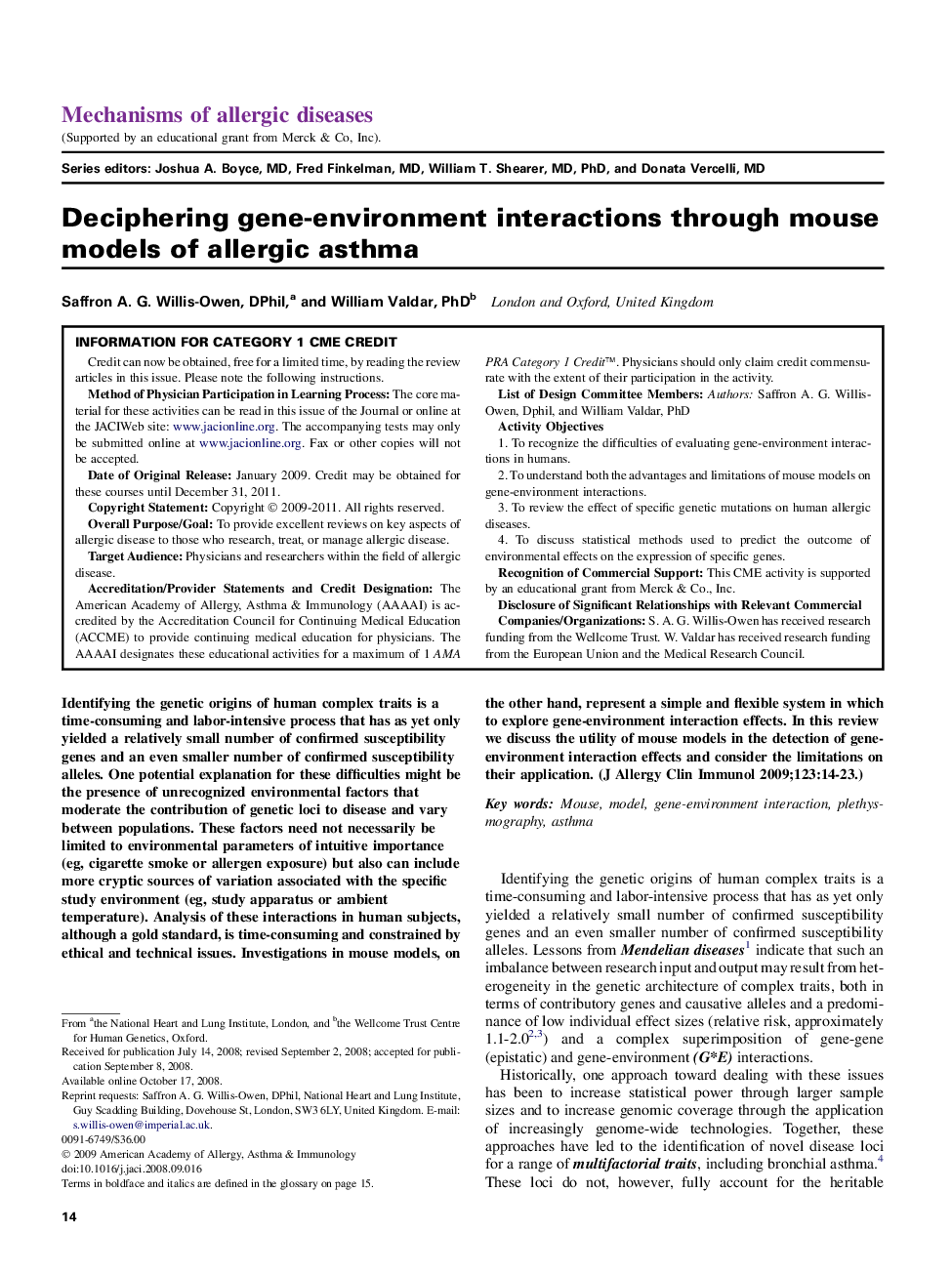| Article ID | Journal | Published Year | Pages | File Type |
|---|---|---|---|---|
| 3201109 | Journal of Allergy and Clinical Immunology | 2009 | 10 Pages |
Identifying the genetic origins of human complex traits is a time-consuming and labor-intensive process that has as yet only yielded a relatively small number of confirmed susceptibility genes and an even smaller number of confirmed susceptibility alleles. One potential explanation for these difficulties might be the presence of unrecognized environmental factors that moderate the contribution of genetic loci to disease and vary between populations. These factors need not necessarily be limited to environmental parameters of intuitive importance (eg, cigarette smoke or allergen exposure) but also can include more cryptic sources of variation associated with the specific study environment (eg, study apparatus or ambient temperature). Analysis of these interactions in human subjects, although a gold standard, is time-consuming and constrained by ethical and technical issues. Investigations in mouse models, on the other hand, represent a simple and flexible system in which to explore gene-environment interaction effects. In this review we discuss the utility of mouse models in the detection of gene-environment interaction effects and consider the limitations on their application.
